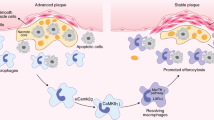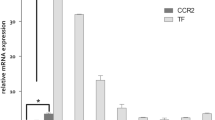Abstract
Gene therapy, a promising treatment for vascular disease, requires appropriate gene vectors with high gene transfer efficiency, good biocompatibility and low cytotoxicity. To satisfy these requirements from the approach of nonviral vectors, a novel block copolymer, poly(ethylene glycol) (PEG)-block-polycation, carrying ethylenediamine units in the side chain (PEG-b-P[Asp(DET)]) was prepared. PEG-b-P[Asp(DET)] formed a polyplex micelle through polyion complex formation with plasmid DNA (pDNA). The PEG-b-P[Asp(DET)] polyplex micelle showed efficient gene expression with low cytotoxicity against vascular smooth muscle cells in vitro. It also showed reduced interactions with blood components, offering its feasibility of gene delivery via the vessel lumen. To evaluate in vivo gene transfer efficiency for vascular lesions, PEG-b-P[Asp(DET)] micelle was instilled into rabbit carotid artery with neointima by an intravascular method, and expression of the reporter gene in vascular lesions was assessed. Polyplexes from homopolymer P[Asp(DET)] and branched polyethyleneimine (BPEI) were used as controls. Ultimately, only the polyplex micelle showed appreciable gene transfer into vascular lesions without any vessel occlusion by thrombus, which was in strong contrast to BPEI and P[Asp(DET)] polyplexes which frequently showed occlusion with thrombus. These findings suggest that the PEG-b-P[Asp(DET)] polyplex micelle may have promising potential as a nonviral vector for the treatment of vascular diseases.
This is a preview of subscription content, access via your institution
Access options
Subscribe to this journal
Receive 12 print issues and online access
$259.00 per year
only $21.58 per issue
Buy this article
- Purchase on SpringerLink
- Instant access to full article PDF
Prices may be subject to local taxes which are calculated during checkout








Similar content being viewed by others
References
Taniyama Y, Tachibana K, Hiraoka K, Namba T, Yamasaki K, Hashiya N et al. Local delivery of plasmid DNA into rat carotid artery using ultrasound. Circulation 2002; 105: 1233–1239.
Nishikage S, Koyama H, Miyata T, Ishii S, Hamada H, Shigematsu H . In vivo electroporation enhances plasmid-based gene transfer of basic fibroblast growth factor for the treatment of ischemic limb. J Surg Res 2004; 120: 37–46.
Edelstein ML, Abedi MR, Wixon J, Edelstein RM . Gene therapy clinical trials worldwide 1989–2004 – an overview. J Gene Med 2004; 6: 597–602.
Tomanin R, Scarpa M . Why do we need new gene therapy viral vectors? Characteristics, limitations and future perspectives of viral vector transduction. Curr Gene Ther 2004; 4: 357–372.
Wagner E, Ogris M, Zauner W . Polylysine-based transfection systems utilizing receptor-mediated delivery. Adv Drug Deliv Rev 1998; 30: 97–113.
Oupicky D, Konak C, Ulbrich K, Wolfert MA, Seymour LW . DNA delivery systems based on complexes of DNA with synthetic polycations and their copolymers. J Control Release 2000; 65: 149–171.
Ogris M, Brunner S, Schuller S, Kircheis R, Wagner E . PEGylated DNA/transferrin-PEI complexes: reduced interaction with blood components, extended circulation in blood and potential for systemic gene delivery. Gene Ther 1999; 6: 595–605.
Oupicky D, Konak C, Dash PR, Seymour LW, Ulbrich K . Effect of albumin and polyanion on the structure of DNA complexes with polycation containing hydrophilic nonionic block. Bioconjug Chem 1999; 10: 764–772.
Katayose S, Kataoka K . Water-soluble polyion complex associates of DNA and poly(ethylene glycol)-poly(L-lysine) block copolymer. Bioconjug Chem 1997; 8: 702–707.
Kanayama N, Fukushima S, Nishiyama N, Itaka K, Jang W-D, Miyata K et al. A PEG-based biocompatible block catiomer with high buffering capacity for the construction of polyplex micelles showing efficient gene transfer toward primary cells. ChemMedChem 2006; 1: 439–444.
Harada-Shiba M, Yamauchi K, Harada A, Takamisawa I, Shimokado K, Kataoka K . Polyion complex micelles as vectors in gene therapy – pharmacokinetics and in vivo gene transfer. Gene Therapy 2002; 9: 407–414.
Behr JP . The proton sponge. A trick to enter cells the viruses did not exploit. Chimia 1999; 51: 34–36.
Kircheis R, Wightman L, Schreiber A, Robitza B, Rossler V, Kursa M et al. Polyethyleneimine/DNA complexes shielded by transferrin target gene expression to tumors after systemic application. Gene Therapy 2001; 8: 28–40.
Chonn A, Semple S, Cullis P . Association of blood proteins with large unilamellar liposomes in vivo. Relation to circulation lifetimes. J Biol Chem 1992; 1111: 239–246.
Dash PR, Read ML, Barrett LB, Wolfert MA, Seymour LW . Factors affecting blood clearance and in vivo distribution of polyelectrolyte complexes for gene delivery. Gene Therapy 1999; 6: 643–650.
Kircheis R, Wagner E . Polycation/DNA complexes for in vivo gene delivery. Gene Therapy Regul 2000; 1: 95–114.
Koyama H, Olson NE, Dastvan FF, Reidy MA . Cell replication in the arterial wall: activation of signaling pathway following in vivo injury. Circ Res 1998; 82: 713–721.
Koyama H, Olson NE, Reidy MA . Cell signaling in injured rat arteries. Thromb Haemost 1999; 82: 806–809.
Clinton SK, Libby P . Cytokines and growth factors in atherogenesis. Arch Pathol Lab Med 1992; 116: 1292–1300.
Srinivasan S, Sawyer PN . Role of surface charge of the blood vessel wall, blood cells, and prosthetic materials in intravascular thrombosis. J Colloid Interface Sci 1970; 32: 456–463.
Kataoka K, Akaike T, Sakurai Y, Tsuruta T . Effect of charge and molecular structure of polyion complexes on the morphology of adherent blood platelets. Makromol Chem 1978; 179: 1121–1124.
Kataoka K, Tsuruta T, Akaike T, Sakurai Y . Biomedical behavior of synthetic polyion complexes toward blood platelets. Makromol Chem 1980; 181: 1363–1373.
Seaman GV . Plasma protein interactions at biological interfaces. Thromb Res 1983; (Suppl 5): 83–91.
Ogris M, Steinlein P, Kursa M, Mechtler K, Kircheis R, Wagner E . The size of DNA/transferrin-PEI complexes is an important factor for gene expression in cultured cells. Gene Therapy 1998; 5: 1425–1433.
Mori Y, Nagaoka S, Takiuchi H, Kikuchi T, Noguchi N, Tanzawa H et al. A new antithrombogenic material with long polyethylene oxide chains. Trans Am Soc Artif Intern Organs 1982; 28: 459–463.
Merrill EW, Salzman EW . Polyethylene oxide as a biomaterial. ASAIO J 1983; 6: 60–64.
Llanos GR, Sefton MV . Does polyethylene oxide possess a low thrombogenicity? J Biomater Sci Polym Ed 1993; 4: 381–400.
Amiji M, Park K . Prevention of protein adsorption and platelet adhesion on surfaces by PEO/PPO/PEO triblock copolymers. Biomaterials 1992; 13: 682–692.
Llanos GR, Sefton MV . Immobilization of poly(ethylene glycol) onto a poly(vinyl alcohol) hydrogel: 2. Evaluation of thrombogenicity. J Biomed Mater Res 1993; 27: 1383–1391.
Espadas-Torre C, Meyerhoff ME . Thrombogenic properties of untreated and poly(ethylene oxide)-modified polymeric matrices useful for preparing intraarterial ion-selective electrodes. Anal Chem 1995; 67: 3108–3114.
Du H, Chandaroy P, Hui SW . Grafted poly(ethylene glycol) on lipid surfaces inhibits protein adsorption and cell adhesion. Biochim Biophys Acta 1997; 1326: 236–248.
Pasche S, Voros J, Griesser HJ, Spencer ND, Textor M . Effects of ionic strength and surface charge on protein adsorption at PEGylated surfaces. J Phys Chem B 2005; 109: 17545–17552.
Stary HC, Blankenhorn DH, Chandler AB, Glagov S, Insull Jr W, Richardson M et al. A definition of the intima of human arteries and of its atherosclerosis-prone regions. A report from the Committee on Vascular Lesions of the Council on Arteriosclerosis, American Heart Association. Circulation 1992; 85: 391–405.
Guzman RJ, Lemarchand P, Crystal RG, Epstein SE, Finkel T . Efficient and selective adenovirus-mediated gene transfer into vascular neointima. Circulation 1993; 88: 2838–2848.
Itaka K, Yamauchi K, Harada A, Nakamura K, Kawaguchi H, Kataoka K . Polyion complex micelles from plasmid DNA and poly(ethylene glycol)-poly(L-lysine) block copolymer as serum-tolerable polyplex system: physicochemical properties of micelles relevant to gene transfection efficiency. Biomaterials 2003; 24: 4495–4506.
Ozaki Y, Satoh K, Yatomi Y, Yamamoto T, Shirasawa Y, Kume S . Detection of platelet aggregates with a particle counting method using light scattering. Anal Biochem 1994; 218: 284–294.
Yamamoto T, Egawa Y, Shirasawa Y, Ozaki Y, Sato K, Yatomi Y et al. A laser light scattering in situ system for counting aggregates in blood platelet aggregation. Meas Sci Technol 1995; 6: 174–180.
Tomida Y, Iino S, Nishikawa M, Hidaka H . A new system to detect native microaggregates of platelets in vivo, with a novel platelet aggregometer employing laser light scattering. Thromb Res 1998; 92: 221–228.
Misawa Y, Konishi H, Fuse K . Platelet aggregates and cardiopulmonary bypass. Ann Thorac Surg 2001; 72: 981–982.
Acknowledgements
This work was supported by The Special Coordination Funds for Promoting Science and Technology from the Ministry of Education, Culture, Sports, Science and Technology (MEXT), and the Core Research Program for Evolutional Science and Technology (CREST) from the Japan Science and Technology Corporation (JST). We are especially grateful to Drs Yuichi Yamasaki, Keiji Itaka, Kensuke Osada, Kanjiro Miyata, Mr Satoru Matsumoto and Mr Shunsaku Asano (The University of Tokyo) for their special technical advice. We thank Dr Makoto Kaneko and Professor Yutaka Yatomi (The University of Tokyo) for supporting us at assessing platelet aggregation. And we also thank Mr Noboru Sunaga Ms Junko Kawakita for their assistance.
Author information
Authors and Affiliations
Corresponding author
Rights and permissions
About this article
Cite this article
Akagi, D., Oba, M., Koyama, H. et al. Biocompatible micellar nanovectors achieve efficient gene transfer to vascular lesions without cytotoxicity and thrombus formation. Gene Ther 14, 1029–1038 (2007). https://doi.org/10.1038/sj.gt.3302945
Received:
Revised:
Accepted:
Published:
Issue Date:
DOI: https://doi.org/10.1038/sj.gt.3302945
Keywords
This article is cited by
-
The use of nanotechnology in cardiovascular disease
Applied Nanoscience (2018)
-
Variable and low-toxic polyampholytes: complexation with biological membranes
Colloid and Polymer Science (2017)
-
Three-layered polyplex micelle as a multifunctional nanocarrier platform for light-induced systemic gene transfer
Nature Communications (2014)
-
A review of RGD-functionalized nonviral gene delivery vectors for cancer therapy
Cancer Gene Therapy (2012)
-
PEGylated Polyplex With Optimized PEG Shielding Enhances Gene Introduction in Lungs by Minimizing Inflammatory Responses
Molecular Therapy (2012)



